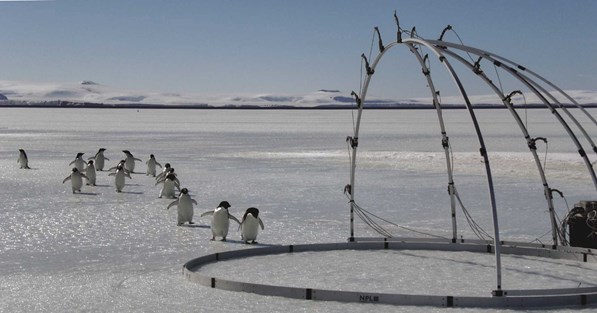Martin King
I am a physical scientist who uses experiments, computational modelling and fieldwork to study two related research areas in modern climate change:
1) How does light interact with seaice and snowpacks.
To measure the reflectivity (and directional reflectance, BRDF) of sea ice and snow-covered sea ice as a function of type (first year, multiyear or melting), temperature, surface roughness and light absorbing impurities within the sea ice as a field, laboratory, and radiative-transfer study. The study will predict the change in albedo owing to increasing dust, ash and black carbon in sea ice and snow on sea ice. We use a combination of fieldwork, modelling and experiments in our sea ice simulator.
 |
| Measuring BRDF in antartica |
 |
| Drilling ice in our seaice simulator |
2) How does atmospheric oxidation effect the light scattering of atmospheric aerosol.
Modern climate change is strongly influenced by aerosol and clouds. The atmospheric ageing or oxidative processing of pollutants in aerosol and clouds affects particle/droplet size and the optical properties of the aerosol and cloud. Aerosol particles and cloud droplets contain naturally occurring organic materials forming organic films on the droplet. Atmospheric oxidation and removal of this film can cause a significant change in optical properties and potentially new cloud formation and may affect precipitation. Previous work has studied the oxidation reactions with proxy chemical compounds. We use our expertise to study organic matter extracted from real atmospheric aerosol in advanced oxidation experiments to quantify interfacial oxidation chemistry effects on atmospheric radiation budgets, cloud formation and global climate change. The work will investigate two systems: (I)The timescale for oxidation of real organic matter (extracted from real atmospheric aerosol) at the air-water interface using laboratory generated radicals and, (II), how the oxidation of organic matter will change the op- tical properties of aerosols and thus the top-of-the-atmosphere albedo. The work will decide whether the oxidation of film on aerosol and droplets warm or cool the planet.
3) How does atmospheric oxidation effect the lifetime of atmospheric aerosol.
We use a combination of computational modelling and experiments on large scale facility equipment such as LSF, ISIS and DLS.
 |
| Typical beamline to measure the reactivity at the air-water interface |
 |
| Micron sized Aerosol particle trapped in foci of two laser beams. The scattered light can be used to accurately follow the size and compositions of the particle. |
References
- Hancke, K, Lund-Hansen, L, Lamare, M, Højlund Pedersen, S, King, M, Andersen, P & Sorrel, B 2018, 'Extreme Low Light Requirement for Algae Growth Underneath Sea Ice: A Case Study From Station Nord, NE Greenland', Journal of Geophysical Research: Oceans , vol. 123, no. 2, pp. 985-1000. https://doi.org/10.1002/2017JC013263
-
Shepherd, R
, King, M, Marks, A, Brough, N & Ward, A 2018, '
Determination of the refractive index of insoluble organic extracts from atmospheric aerosol over the visible wavelength range using optical tweezers',
Atmospheric Chemistry and Physics, vol. 18, no. 8, pp. 5235-5252.
https://doi.org/10.5194/acp-18-5235-2018
























